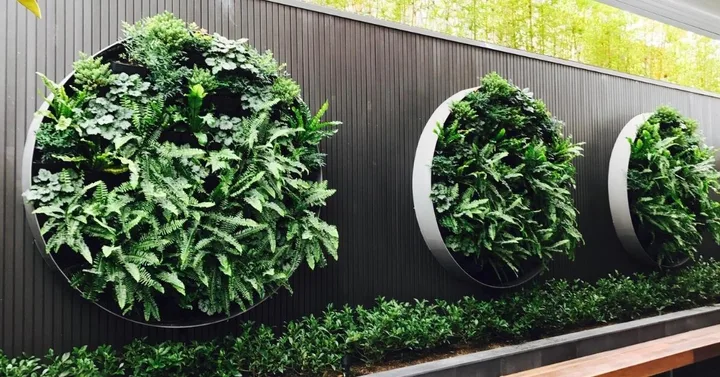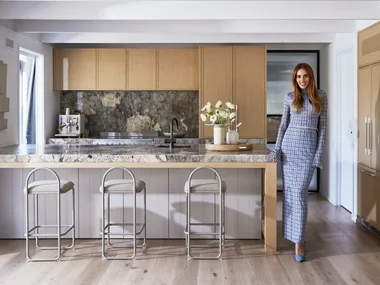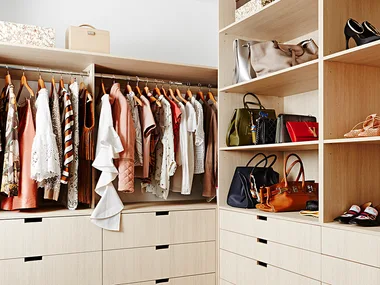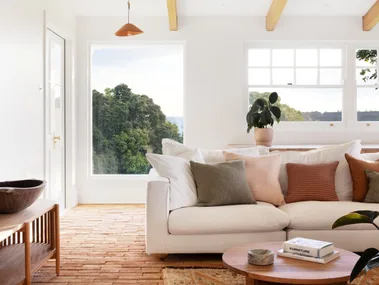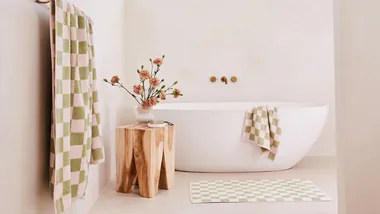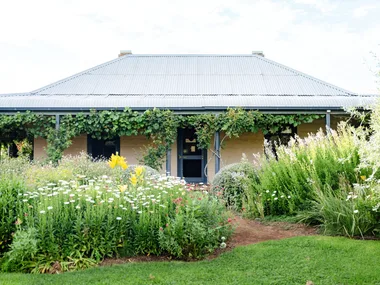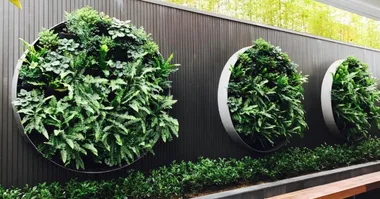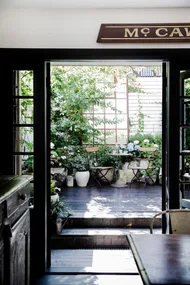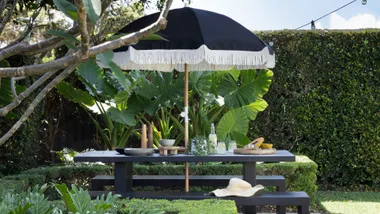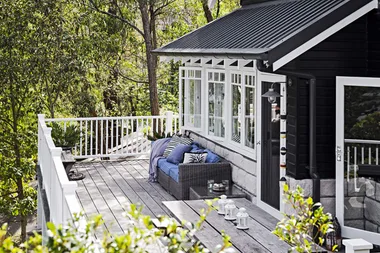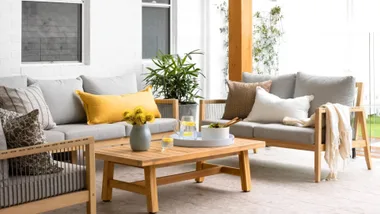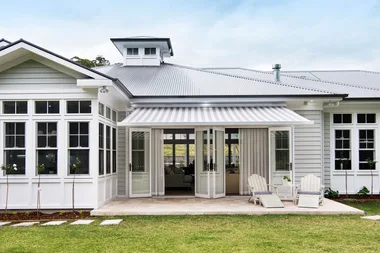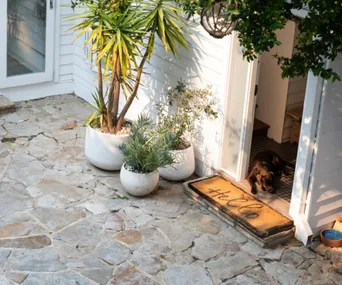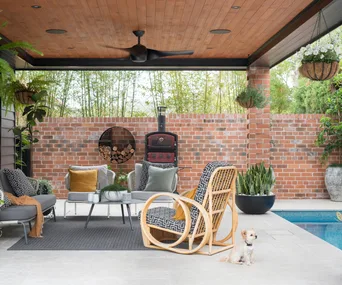Vertical gardens make a fabulous statement inside or outdoors at home and are a wonderful way to bring more greenery into your environment using an otherwise wasted space. Perhaps the perfect problem solver for awkward walls and outdoor areas, they provide privacy, introducing lush foliage, or masking unattractive walls. They’re also a great solution for growing plants often restricted to a vegetable patch.
With so many options on the market to choose from, we asked the experts to share their top vertical garden ideas, the dos and don’ts of installing a vertical garden in your own home and their tips for the best vertical garden plants.
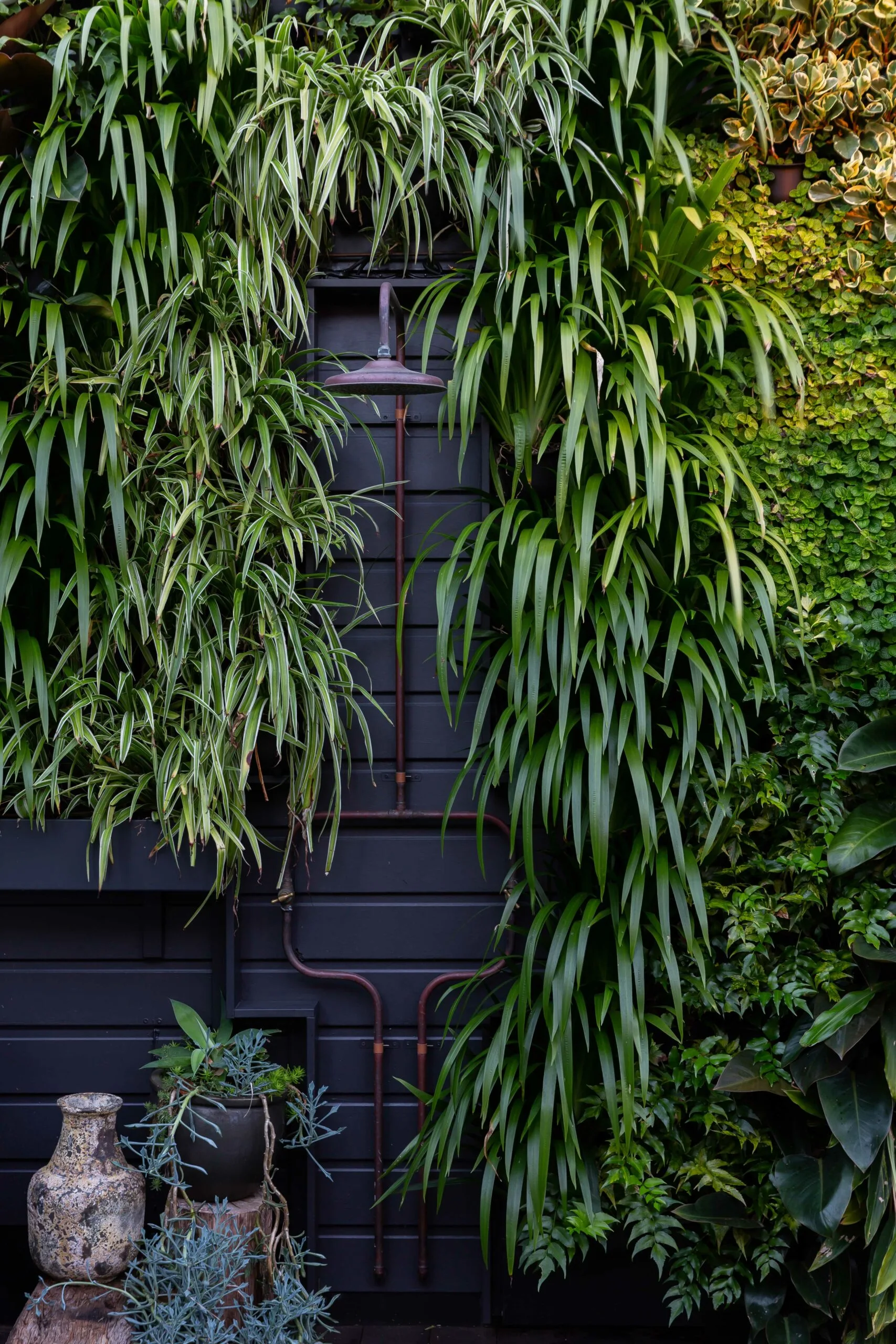
Incorporate form with functionality to suit your lifestyle, like this outdoor shower nestled into a lush outdoor vertical garden. (Credit: Photography: Simon Whitbread | Courtesy of Vertikal)
(Credit: Photography: Simon Whitbread | Courtesy of Vertikal)What are the different types of Vertical gardens?
Due to the popularity of vertical garden walls, there are now engineered options in the market that are self-watering and have the planting depth and functionality of a container garden. Ready-made systems can be custom-designed to suit your space and packages can include irrigation, plants and maintenance, while basic modular kits are available at hardware stores, or you can try homemade DIY vertical garden solutions using new or upcycled items.
Another style is a “pocket” garden, featuring plants tucked into pockets made from recycled plastic, felt or canvas and lined for moisture retention, then screwed onto a wall-hung rail or timber batten – a simple option for the budget-conscious gardener.
Factors to consider when planning your vertical garden wall
how prepared you are to maintain it
how much space you have
your climate and the orientation of your wall
the types of plants you’d like to grow
whether to grow food like herbs or simply enjoy the visual effect
The easiest option takes the form of a container vertical garden, using potted plants (terracotta, plastic or metal) attached to a wall or displayed in a clip or slot-in system. “Our patented ‘Skale’ system is ideal for residential applications as it comprises a series of individual pots that are then housed in a routed polymer substructure that we can screw fix to most walls,” says Sam Collins, general manager at Vertikal. “These pots can be easily swapped out as the garden matures, but the aim is to restrict the growth of the plant to keep some textural consistency, and ensure the plants don’t outgrow the space.”
Many specialist companies have different package options to choose from for residential settings, including the trending circular vertical gardens. “We also offer custom sized gardens which can be made to any dimension,” says Jamie Papalia, director of Vertical Gardens Australia, who has a range of packages that spans a number of sizes for both rectangular and round vertical gardens.
“The other main type of green wall system is a hydroponic system which utilises pre-planted modules with a growing medium,” says Sam. “These can be used for residential applications, but ongoing maintenance becomes quite tricky unless you are an expert, and trying to restrict the growth of the plants is a challenge due to the large soil volume.”
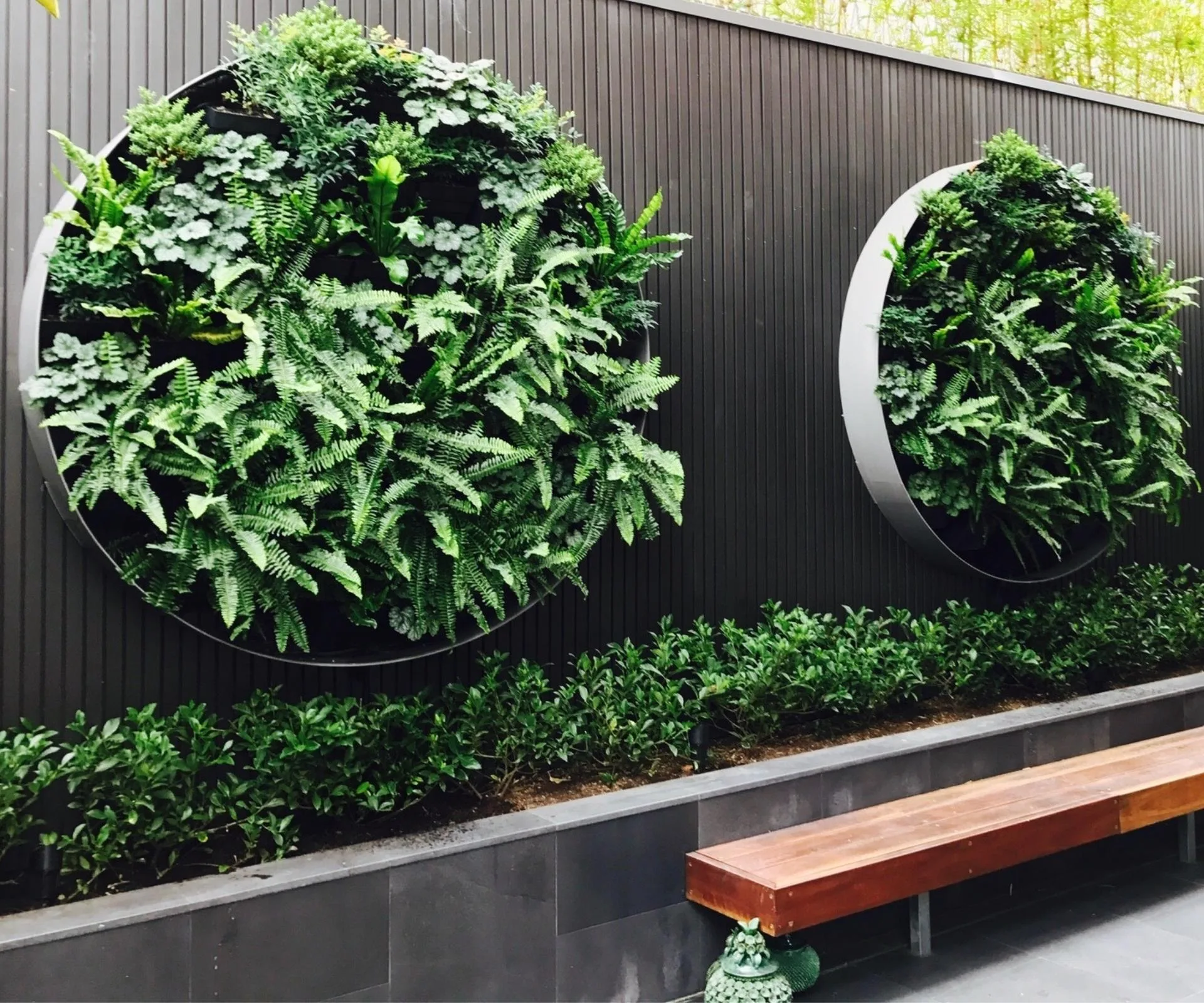
Don’t stop at one. Multiple vertical gardens can span an entire wall. (Credit: Photo courtesy of Vertical Gardens Australia)
(Credit: Photo courtesy of Vertical Gardens Australia)How do you choose the best plants for a vertical garden?
Different plants require different amounts of care and it’s important to choose plants that suit your lifestyle and the orientation of your vertical garden in relation to the available sunlight. The best results come from the specialists who have tried and tested scores of varieties in all kinds of settings. “Someone attempting to DIY their own vertical garden without a good knowledge of what works best in any environment can quickly lead to issues,” says Sam. “We have plants for all different types of environments ranging from full sun to part sun/part shade, full shade as well as indoor high-light to low-light plants.”
Succulents are commonly used as a low-maintenance vertical garden, as well as creepers, ferns, flowering annuals, herbs and even trailing varieties like Devil’s Ivy. Until you’re a seasoned green thumb, it’s best to opt for low-maintenance species before trying your hand at the needier varieties. “Most herbs are seasonal and once they die back, leave the exposed green wall hardware which isn’t always a great look,” Sam warns. “Edibles also enjoy full sun, so the right orientation is key.”
Jamie believes the combination of plants is what makes a vertical garden so visually impactful, suggesting a fusion of different colours and textures in the mix. “Purple heucheras are very beautiful and provide great colour and contrast,” he says.
https://luxuryescapes.com/au/search?destinationName=Europe&destinationId=le_12767faf1bf8cafc7594430586c558c2&adults=2&children=none&holidayTypes=Sun+%26+Beach&pages=4
Sam agrees. “Most of the species we specify are subtropical, and unfortunately (with the exception of a few species), natives generally do not perform well in vertical gardens.”
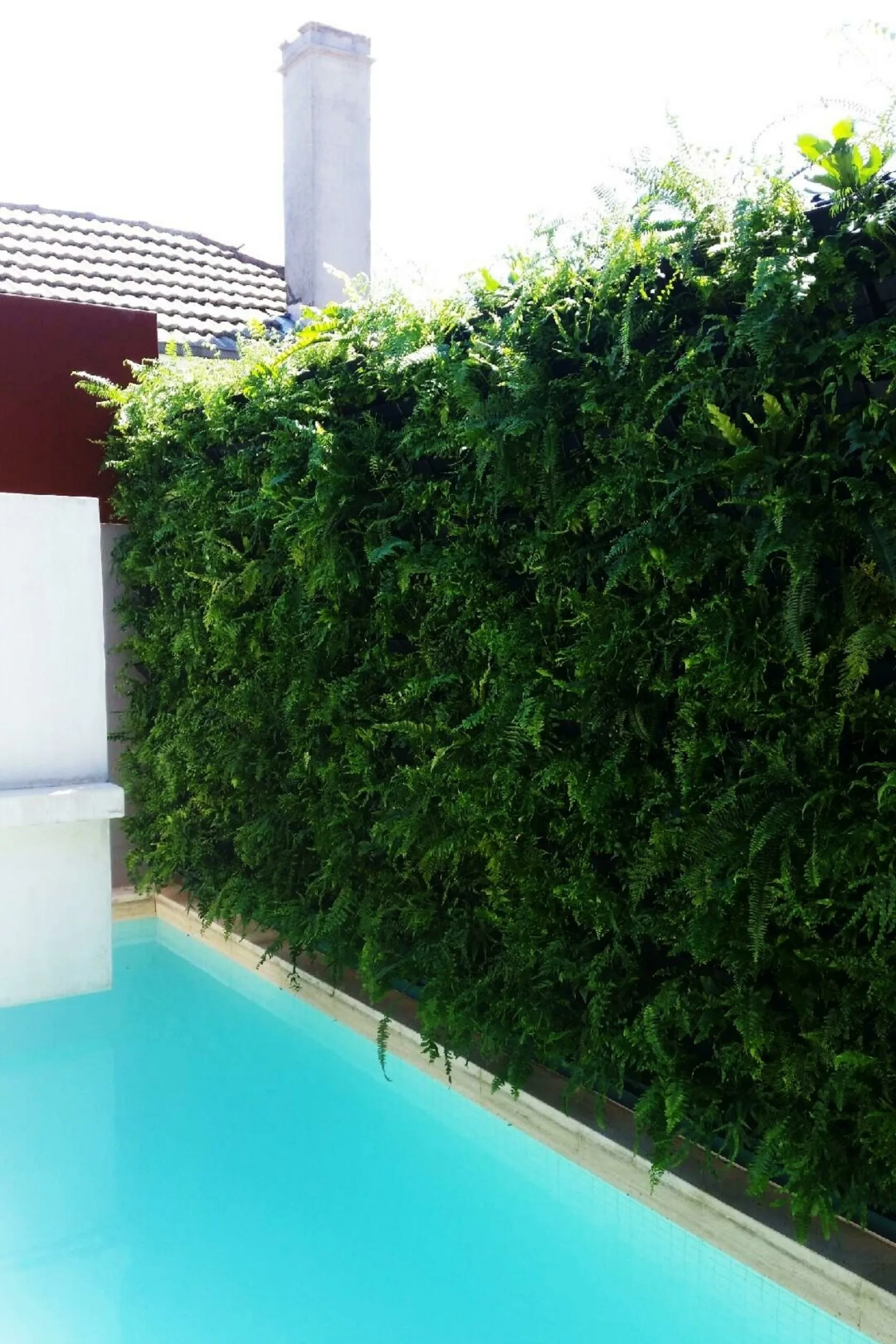
This hard-to-reach wall is brought to life by a lush vertical garden with planting of predominantly ferns. (Credit: Image courtest of Vertical Gardens Australia)
(Credit: Image courtest of Vertical Gardens Australia)Where should you install a vertical garden?
“A vertical garden can literally be installed anywhere,” says Sam. “Typical locations include entrance walls, garage walls, swimming pools, kitchen splashbacks, side paths/fences, balconies, external shower areas and internal atriums and walls.” While it could be fixed to just about any indoor or outdoor wall, remember the plant choice in relation to the location of your vertical garden will be crucial to its success. In general, group all-sun or all-shade plants, using ones that have the same rate of growth and characteristics. Talk to an expert and get creative to make a statement with yours, cover a tricky area or celebrate a great one.
Even a small yard or garden has variances in air, light, soil, and water known as micro-climates. You will need to consider the temperature, patterns of light, humidity distribution and air circulation. These factors are not just for determining the location of your vertical garden, but will also assist you in working out what plants will do well.
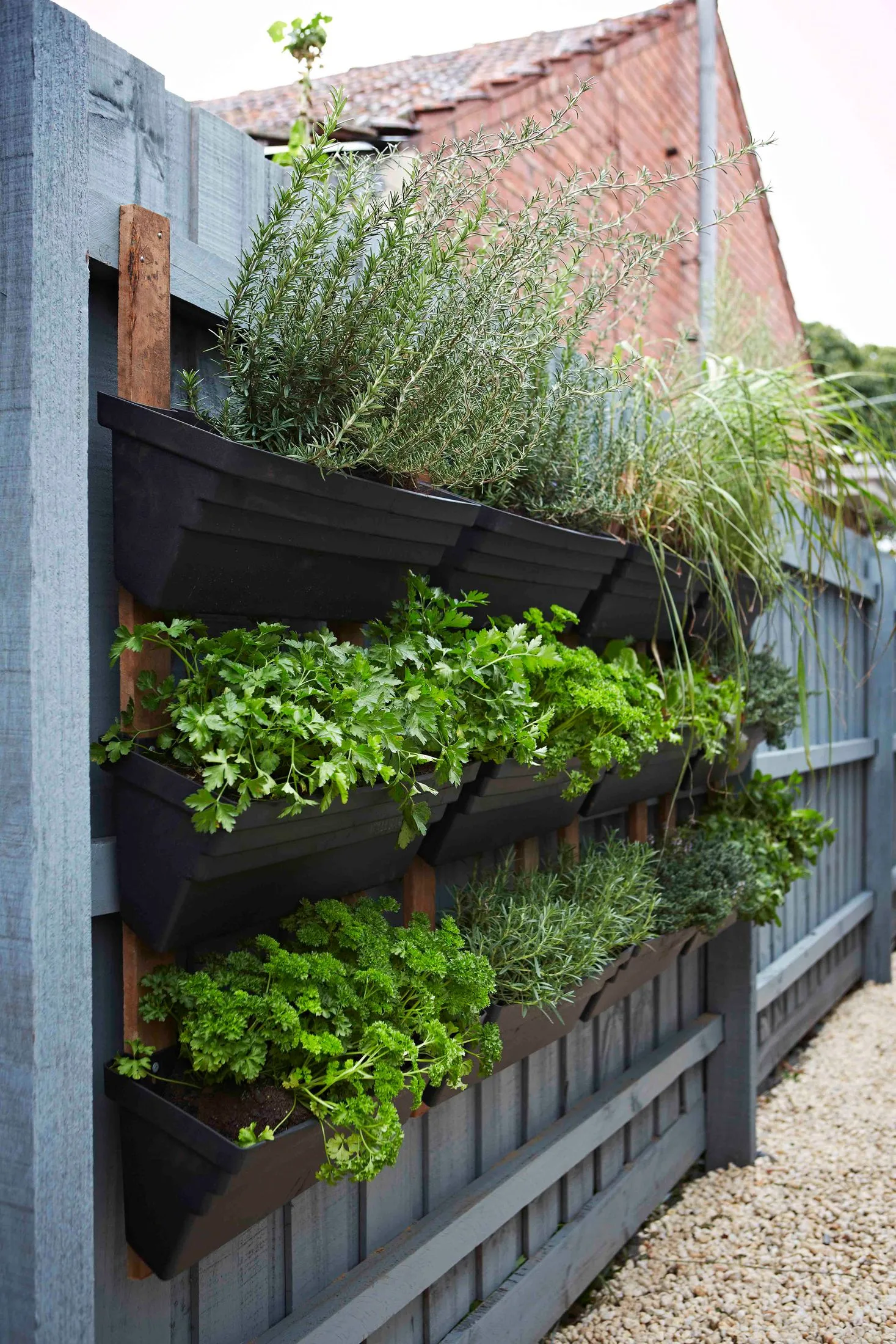
Install a vertical vegetable garden and fill it with herbs in an area that’s handy to your kitchen.
How much effort do they take to look after?
Be realistic about your ability to care for the plants once they’re in place. “There is no such thing as a ‘low maintenance vertical garden’,” says Sam. If you’re a keen gardener prepared for some trial and error, tending your vertical garden can be just as rewarding as a conventional garden. Perhaps a vertical herb garden would capture the sun somewhere a regular vegetable garden cannot, but it needs at least the same amount of care.
At first, it might need more care than a regular in-the-ground garden or container plant. These living walls are more compact and therefore have less soil, so they may need to be watered more often. This is where investing in an irrigation system makes sense, by supplying constant water to your plants. “As every pot has a hole at the base, the water drips through and feeds the next level of plants, all the way to the base,” says Jamie. “Irrigation is set on a battery-operated commercial-grade timer to water your garden depending on the aspect and size of your vertical garden.”
“Just like your regular garden, your vertical garden requires ongoing maintenance,” says Jamie. “We recommend maintenance at least every quarter which allows the irrigation system to be adjusted for each season, giving the plants the right amount of water for their environment.”
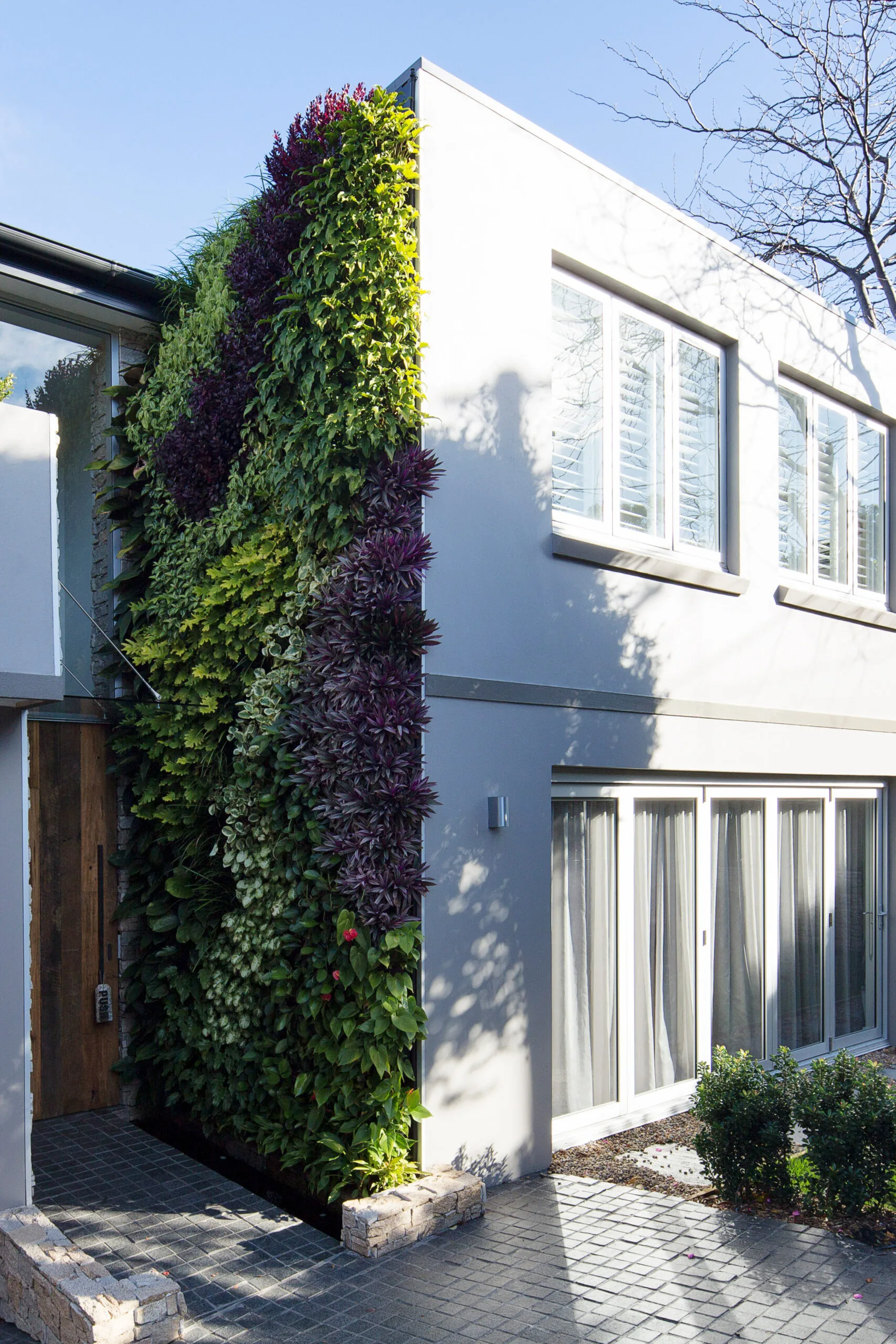
This stunning entrance is enlivened by a lush vertical garden that mixes colour and texture in a variety of plants. (Credit: Photography: Simon Whitbread | Courtesy of Vertikal)
(Credit: Photography: Simon Whitbread | Courtesy of Vertikal)The correct potting soil mix can help retain the water and hold in the moisture, and incorporating peat moss in the mix helps water retention. Another important factor is gravity, which pulls the water down. Plants that don’t need as much water are recommended for the top part of the vertical garden since they’ll dry out first. Place the ones more suited for wetter conditions at the bottom of the vertical garden. On the upside, small-scale vertical gardens have the advantages of no weeds and reduced ground compaction, so you won’t need to work the soil as hard.
